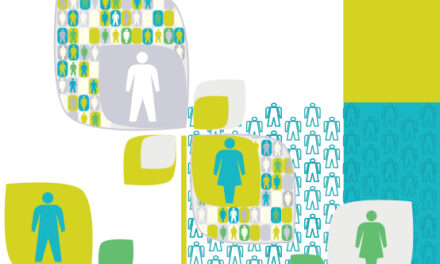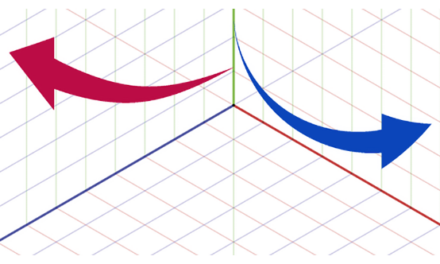Mr. Dempster urges educators to take a close look at the composition of each instructional unit with an eye to separating the wheat from the chaff, so that they can get on with the serious business of effectively teaching the essentials.
Curricular change is hardly a newcomer to discussions of education reform in the U.S. However, only recently have concerns about the sheer size of the implemented curriculum threatened to move to center stage. Reform-minded scholars and educators have argued that decreasing the size of the curriculum will benefit students. Exposing students to less material but in more depth will, they contend, lead to greater learning than the current practice of exposing students to a large amount of often disconnected information.1 So far, though, this claim has not received the rigorous scrutiny that an item on the national agenda with such far-reaching implications deserves. Teachers, administrators, policy makers, and others who seek to make such drastic changes in the curriculum will face difficult problems and will have to overcome many obstacles, including the nagging suspicion that students exposed to less will simply learn less, not more.
In this article I review relevant research on learning and discuss its implications for proposals to reduce the size of the curriculum. At the very least, these “lessons from learning research” illustrate the kinds of data on which curriculum decisions might be based. The results of this research arguably provide strong support for those who have adopted the old Bauhaus motto, “Less is more.”2 They lead to the conclusion that our students are exposed to too much material and that this practice is antithetical to what is known about effective learning.
The curriculum that now predominates in American schools seems to be based on three beliefs about human learning. First, curriculum decisions appear to be informed by the conviction that “more is better” and that just about anything that “enriches the meaning” of a lesson will assist learning. Second, there appears to be a pervasive belief among educators that exposing students to information contains little or no risk, that knowledge can’t hurt. Third, the curriculum has been shaped according to the dual assumption that most students can learn most things quickly and that, once a student has satisfactorily demonstrated such learning, further practice is unnecessary. As the research presented below shows, each of these beliefs is false.
Overstuffed and undernourished
There is mounting evidence that students in a variety of curricular domains, including science, mathematics, and social studies, are receiving fleeting exposure to a vast amount of material.3 The instructional medium most responsible for this state of affairs is the textbook. National surveys report that many classroom teachers look to textbooks for guidance in deciding what to teach, and the textbook to a great extent defines the content of what is taught in U.S. schools.4 The textbook is both a subject-matter authority and a pedagogical guide. However, most textbooks present an abundance of material and encourage teachers to address a wide range of topics. According to one study, ”The table of contents of most precollege texts reads like a course catalog for a four-year college. . . . The new vocabulary in a one-week science unit often exceeds that for a one-week unit in a foreign language.”5
Cross-cultural comparisons, as well as historical studies, make a similar point, indicating that textbooks currently in use in the U.S. are unrivaled in size and amount of information covered.6 U.S. science texts, for example, are considerably larger than their counterparts in Japan and Singapore, where students tend to have higher achievement test scores than American students. The difference in the size of the texts seems to reflect the quantity of facts about each topic rather than the number of topics and key concepts covered. The texts used in Japan and Singapore are more concise and focus on a few examples, whereas the U.S. texts are laden with more information and detail.
Unfortunately, many texts are so packed with facts, names, and details that the real point of the lesson is often obscured.
As a result, U.S. textbooks and the tests designed to measure proficiency in a particular domain make so many, often conflicting, curricular demands that teachers cannot possibly cover all the material adequately. Thus teachers often make a practice of simply “mentioning” or “teaching for exposure,” which means that students receive superficial exposure to a large amount of information.7 That information includes the concepts, skills, and phenomena teachers are seeking to convey, as well as a variety of supporting material, such as details, embellishments, redundancies, illustrations, examples, facts, and names. Much of this information consists of what researchers refer to as “elaborations” that is, material that is intended to enrich the meaning of the central information. Unfortunately, many texts are so packed with facts, names, and details that the real point of the lesson is often obscured.
In an effort to redress this imbalance, Project 2061 of the American Association for the Advancement of Science and the National Science Teachers Association have both initiated major reform efforts that seek to restructure science teaching in the U.S. While the two proposals recommend different approaches to the problem, both efforts share the same goals and are based on the explicit assumption that less content taught more effectively over successive years will lead to greater scientific literacy for the general public. Both efforts recommend that the number of topics taught and their accompanying baggage of facts and terminology be greatly reduced. According to the Project 2061 task force, the science and mathematics curricula are “overstuffed and undernourished.” Consequently “the curricula must be changed to reduce the sheer amount of material covered.”8
Research on elaborations
From the early returns of research on elaborations, most researchers came to believe that just about anything that would make information “more meaningful” would improve a student’s ability to learn it. However, the early studies were conducted with traditional laboratory materials (e.g., lists of arbitrarily paired words) that have little or no meaning to begin with. More recent studies, using learning tasks that are less artificial, have not only dimmed this expectation but have shown that elaborations can be detrimental.9 It appears that elaborations often divert attention away from the crucial point of a lesson.
In an especially informative series of studies of this sort, students learned better when they read text summaries that contained only main ideas (e.g., “Africa has had less rapid development in the 1960s than in the 1950s”) than when they read the unabridged texts that contained both main ideas and the details, embellishments, and redundancies that typically accompany main ideas (e.g., “In the 1960s there was an unwise emphasis on manufacturing at the expense of agriculture”).10 This was the case even when total study time for main points was equated and subjects in the elaboration condition received additional time to study the elaborations. Not only did the elaborations hurt subjects’ ability to retain the main points in the text, but they also hindered their subsequent ability to acquire new information that was related to the material presented in the summaries. Although it may be argued that the elaborations should have provided a richer knowledge base for acquiring new information, this is not what was found. In these studies, the elaborations were clearly relevant to the main ideas. But in many cases they are not. Consider, for example, the excerpt below, adapted from an elementary school text.
Aquaculture
One earth zone having to do with food production we have not yet investigated. It is the seas. Can they be farmed? The seas carry some of man’s biggest manufactured items — his ships — and provide recreation for those who live along the shores. But the seas’ greatest importance is the number of things found in their depths. Many of them are useful and necessary to man. From his beginnings, man has probably hunted and caught fish. As he developed boats, he was able to get into deeper areas of water.
Recognizing the high nutritional value of fish, man has sought them more and more. He has been attracted to those fishing areas in which he could catch many fish of one kind. Tuna are caught with hooks and sardines with nets. Mackerel are packed in different size cans than sardines. And tuna and salmon in the same style of can are packed quite differently.
The authors were apparently trying to create a more meaningful, learner-friendly context for comprehension by elaborating on the main ideas. However, it is difficult to see what details about the size and style of cans for packing tuna and salmon have to do with farming the seas. Research suggests that the reader would be better off without these details. They are irrelevant and only serve to make it more difficult for the reader to extract the main ideas.
In another series of studies with a counterintuitive outcome, college students were given a lengthy list of unfamiliar vocabulary words to learn. One group received only the words and their definitions, while the other received the words, their definitions, and either one or three sentences in which the words were used in correct contexts. Although the group receiving the sentence-context elaboration was treated in a manner consistent with the popular “learning from context” approach to vocabulary learning, this group actually performed worse than the group receiving only the words and their definitions. Moreover, these same findings prevailed when the group receiving the sentences in context was given more total study time (to allow for processing the sentences) than the group receiving only words and definitions. The findings even held up when the measure of learning was the subjects’ ability to use the vocabulary words correctly in sentences.11 Clearly, these findings are contrary to the prevailing trends in such areas as language arts, which emphasize the importance of context.
In order to promote classroom learning, it appears that elaborations must meet at least four necessary, but not always sufficient, conditions. First, they must be personally meaningful.12 If the student does not have sufficient domain-specific knowledge to comprehend an elaboration, he or she will not benefit from it; indeed, it may hinder learning. In one study, for instance, examples in text facilitated recall and comprehension but only when the reader was very knowledgeable in the topic area. Otherwise, the elaborated text resulted in poorer performance than the unelaborated ones. Significantly, U.S. science texts tend to use examples that are remote from the experience of many children. Examples in foreign texts appear to provide a better connection to real life.
Second, the elaboration must be relevant and should not digress too far from the point that the teacher or textbook wishes to convey.13 For example, illustrations that are not relevant but merely decorative, as they are in many texts, may actually impede learning.
Third, the elaboration must be precise. It should be logically or causally connected to the main point, so that the learner can either reconstruct or infer the main idea from the elaboration.14
Finally, elaborations are likely to be effective only to the extent that they encourage processing that is complementary to the processing invited by the material to be learned itself.15 Research using material from textbooks has shown that elaborations do not facilitate learning if they help students focus on information that they would have processed easily in the first place.
Research on interference
Interference is one of the most thoroughly investigated phenomena in the study of learning. Two kinds of interference namely, proactive and retroactive interference have received most of the attention. Proactive interference occurs when previously presented information hinders the learning of new material, while retroactive interference occurs when the retention of previously presented information is reduced by subsequent learning. The risk of interference is highest when a lot of similar information is presented and the material is not well-learned. For example, a teacher who is introduced to an increasing number of students but does not have an opportunity to learn their names very well will probably find it increasingly difficult to learn the names of new students (proactive interference), as well as to remember the names of past students (retroactive interference).
Another form of interference is known as coactive interference. It arises when one information-processing activity impairs another that is occurring at essentially the same time. In the study that compared text summaries with unabridged texts, for example, the findings suggest that the embellishments to the text forced subjects into a “time-sharing” mode of information processing, which interfered with their ability to adequately focus attention on the main points. As with proactive and retroactive interference, coactive interference is also much influenced by the amount of material to which the learner is exposed and by the degree to which it has already been learned.
The early investigations gave little reason to believe that interference was of much practical significance, since interference seemed to be confined to artificial laboratory materials. However, more recent studies have shown that massive amounts of interference can occur in a variety of classroom activities .16
For example, research suggests that many, if not most, texts contain abundant sources of interference.17 One section of a text can interfere with another section, particularly if the two sections are topically related. In one study, subjects who first read a passage about direct current and then read a passage about alternating current tended to perform worse on subsequent tests about electricity than did subjects who read only one of the sections and an unrelated passage. Reading about two related topics in succession, without having the opportunity to really understand the material, appears to result in a great deal of confusion and little learning. Given that instruction often occurs in blocks of time, with each block partitioned into related topics, this finding is of considerable practical significance.
Research on practice
Research has shown that, under certain conditions, practice may either reduce the effects of interference or result in proactive or retroactive facilitation of learning.18 For example, the acquisition of skill in multiplication is normally hampered by brief exposures to problems with similar or identical digits and products, because problems encountered early in a sequence interfere with problems introduced later and vice versa. But with continuous practice on both old problems and new problems, these difficulties can be avoided. Likewise, several rereadings of the passage about direct current (cited above) completely eliminated the retroactive interference that normally comes about as a result of reading the passage about alternating current. The rereadings even resulted in some retroactive facilitation.
The conditions most favorable to such outcomes involve what learning researchers refer to as “distributed” or “spaced” practice in the form of either multiple presentations of the information to be learned (e.g., reviews) or in the form of tests. The signature characteristic of distributed practice is that the practice sessions are distributed over a relatively lengthy period of time (e.g., three reviews in three months). Although “massed” practice, which occurs over a relatively brief period (e.g., three reviews in one week), may result in rapid acquisition of new material, the learning is not as durable or as resistant to interference as that acquired through frequent distributed practice.19 Frequent distributed practice helps students maintain and develop concepts and skills introduced early in a sequence, and it gives them the time needed to find appropriate and meaningful ways of integrating information from a variety of sources. Research suggests that distributed practice does more than simply increase the amount learned; it frequently shifts the learner’s attention away from the verbatim details of the material being studied to its deeper conceptual structure.20 Even insights seldom occur without repeated exposure to relevant material over a relatively lengthy period. Anyone who has arrived at a profound understanding of something will recognize the importance of distributed practice and the sense of accomplishment it affords. Sustained involvement in an area of inquiry what Isaac Newton reportedly referred to as “patient thought” is the key to success in a wide variety of endeavors.
Implications for the curriculum
In short, research on elaborations, interference, and practice has several implications for proposals to reduce the curriculum. First, it suggests that many of the elaborations found in textbooks and provided by teachers are of little value. Some probably hinder the realization of key educational objectives even as they consume limited instructional resources. Second, exposing students to information has a potential downside: it may actively interfere with the acquisition and retention of other information. Thus there is indeed some truth to the old adage “a little learning is a dangerous thing.” Third, if there is one indispensable key to effective learning, it is distributed practice. But in an overstuffed curriculum there is little opportunity for distributed practice.
For reform efforts to be successful, difficult choices will have to be made about what students ought to learn.
Together, these lessons from research on learning illustrate how research can be used to support efforts to streamline the curriculum. Of course, curriculum decisions are not based on research alone. As Theodore Sizer noted, “Coverage within subjects is a key priority. “‘21 What one sees and hears in the classroom is a torrent of disconnected facts, procedures, lists, and dates. When an imaginative teacher suggests the deletion of some material, the voices raised in protest have usually won out. Indeed, research suggests that teachers, curriculum planners, and administrators are much more eager to add topics and supporting material to the existing curriculum than they are to remove them.22 On a different level, this practice parallels the phenomenon known as “course proliferation,” which has been nicely chronicled in The Shopping Mall High School..23
For reform efforts to be successful, difficult choices will have to be made about what students ought to learn. Research provides guidelines for identifying elaborations and for distinguishing between effective and ineffective ones, but it says little about the range of topics or the specific concepts and skills within each topic that should remain. Supporting material must be distinguished from key educational objectives; only then can time-consuming elaborations that do not serve their purpose be weeded out.
I do not mean to suggest that textbooks and other sources of information in the classroom should be little more than glorified outlines. But with 20 or so states setting their own standards for what should go into textbooks, it’s no wonder that the books often end up so crammed with definitions, facts, and embellishments that they read like a Sears catalogue. Textbook publishers are not likely to trim their texts unless it is worthwhile financially, and this is unlikely to happen unless states insist on cuts and coordinate their guidelines, as California and Texas have recently done on behalf of their science texts.
Educators will also need to be persuaded that poorly learned information can be harmful and that sound learning normally requires frequent practice, in the form of either reviews or tests. This will not be easy, since many educators have convinced themselves that “repetitive practice” stifles creativity, and they identify such practice with something called “rote learning.” It is partly because of this belief that teachers avoid recycling curricular units throughout the term. Besides, recycling isn’t tidy. It doesn’t let teachers teach a unit and dust off their hands quickly with a nice sense of completion.
In short, truly effective learning requires frequent distributed practice, and this can only be achieved by reducing the size of the existing curriculum, which is dangerously overstuffed. But instead of focusing immediately on which topics to eliminate, educators should consider taking a close look at the composition of each instructional unit, with an eye to relieving the curriculum of elaborations that do not serve a purpose. In effect, such a reexamination would force educators to think about separating the wheat from the chaff, so that they can get on with the serious business of effectively teaching the essentials.
References
- Bet-Sheva Eylon and Marcia C. Linn, “Leaming and Instruction: An Examination of Four Research Perspectives in Science Education,” Review of Educational Research, vol. 58, 1988, pp. 251301; Donald J. Freeman et al., “Do Textbooks and Tests Define a National Curriculum in Elementary School Mathematics?,” Elementary School Journal, vol. 83, 1983, pp. 501-13; Fred M. Newmann, “Can Depth Replace Coverage in the High School Curriculum?,” Phi Delta Kappan, January 1988, pp. 345-48; and Andrew Porter, “A Curriculum out of Balance: The Case of Elementary School Mathematics,” Educational Researcher, June/July 1989, pp. 9-15.
- Theodore R. Sizer, Horace’s Compromise: The Dilemma of the American High School (Boston: Houghton Mifflin, 1984.)
- Eylon and Linn, op. cit.; Newmann, op. cit.; and Porter, op. cit.
- Freeman et al., op. cit.
- Eylon and Linn, op. cit.
- Marilyn J. Chambliss and Robert C. Calfee, “Designing Science Textbooks to Enhance Student Understanding,” Educational Psychologist, vol. 24, 1989, pp. 307-22; and Patricia Mulcahy and S. Jay Samuels, ”Three Hundred Years of Illustrations in American Textbooks,” in Harvey A. Houghton and Dale M. Willows, eds., The Psychology of Illustration, vol. 2 (New York: Springer-Verlag, 1987), pp. 1-52.
- Porter, op. cit.
- Project 2061: Sciencefor All Americans (Washington, D.C.: American Association for the Advancement of Science, 1989).
- John D. Bransford et al., “Differences in Approaches to Learning: An Overview,” Journal of Experimental Psychology: General, vol. 3, 1982, pp. 390-98; Frank N. Dempster, “Informing Classroom Practice: What We Know About Several Task Characteristics and Their Effects on Leaming,” Contemporary Educational Psychology, vol. 13, 1988, pp. 254-64; idem, “Effects of Variable Encoding and Spaced Presentations on Vocabulary Learning,” Journal of Educational Psychology, vol. 79, 1987, pp. 162-70; idem, “Retroactive Interference in the Retention of Prose: A Reconsideration and New Evidence,” Applied Cognitive Psychology, vol. 2, 1988, pp. 97-112; and Lynne M. Reder, “Techniques Available to Author, Teacher, and Reader to Improve Retention of Main Ideas of a Chapter,” in Susan F. Chipman, Judith W. Segal, and Robert Glaser, eds., Thinking and Leaming Skills, vol. 2 (Hillsdale, N.J.: Erlbaum, 1985).
- Reder, op. cit.
- Dempster, “Effects of Variable Encoding.”
- Chambliss and Calfee, op. cit.
- Reder, op. cit.; and Joel R. Levin, Gary J. Anglin, and Russell N. Camey, “On Empirically Validating Functions of Pictures in Prose,” in Dale M. Willows and Harvey A. Houghton, eds., The Psychology of Illustration, vol. 1 (New York: Springer-Verlag, 1987), pp. 51-85.
- Bransford et al., op. cit.
- Mark A. McDaniel and Gilles 0. Einstein, “Material-Appropriate Processing: A Contextualist Approach to Reading and Studying Strategies,” Educational Psychology Review, vol. 1, 1989, pp. 113-45.
- Gary B. Blumenthal and Donald Robbins, “Delayed Release from Proactive Interference with Meaningful Material: How Much Do We Remember After Reading Brief Prose Passages?,” Journal of Experimental Psychology: Human Leaming and Memory, vol. 3, 1977, pp. 754-61; Alan S. Brown, “Encountering Misspellings and Spelling Performance: Why Wrong Isn’t Right,” Journal of Educational Psychology, vol. 80, 1988, pp. 488-94; Jamie D. Campbell and Jeffrey D. Graham, “Mental Multiplication Skill: Structure, Process, and Acquisition,” Canadian Journal of Psychology, vol. 39, 1985, pp. 338-66; and Dempster, “Retroactive Interference.”
- Dempster, “Retroactive Interference.”
- Campbell and Graham, op. cit.; Dempster, “Retroactive Interference”; and Perry W. Thorndyke and Barbara Hayes-Roth, “The Use of Schemata in the Acquisition and Transfer of Knowledge,” Cognitive Psychology, vol. 2, 1979, pp. 82-106.
- Frank N. Dempster, “Synthesis of Research on Reviews and Tests,” Educational Leadership, April 1991, pp. 71-76.
- Richard E. Mayer, “Can You Repeat That? Qualitative Effects of Repetition and Advance Organizers on Learning from Science Prose,” Journal of Educational Psychology, vol. 75, 1983, pp. 40-49.
- Sizer, p. 81.
- Robert E. Floden et al., “Responses to Curriculum Pressures: A Policy-Capturing Study of Teacher Decisions About Context,” Journal of Educational Psychology, vol. 73, 1981, pp. 129-41.
- Arthur G. Powell, Eleanor Farrar, and David K. Cohen, The Shopping Mall High School (Boston: Houghton Mifflin, 1985).
Citation: Dempster, F.N. (1993). Exposing our students to less should help them learn more. Phi Delta Kappan, 74 (6), 432-437.
ABOUT THE AUTHOR

Frank N. Dempster
FRANK N. DEMPSTER is a professor in the Department of Educational Psychology, University of Nevada , Las Vegas










